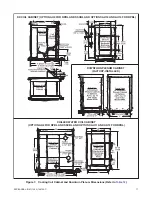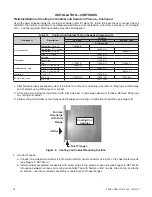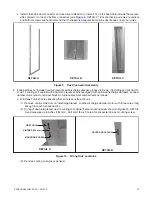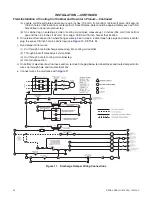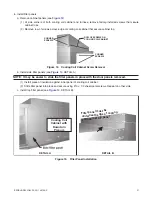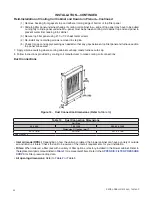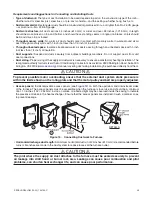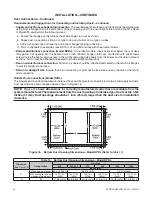
23
SSCBL-RPBL-IOM (10-22) 149159-C
Requirements and Suggestions for Connecting and Installing Ducts
• Type of ductwork:
The type of duct installation to be used depends in part on the construction type of the roof—
whether wood or steel bar joist, steel truss, or pre-cast concrete—and the ceiling—whether hung, flush, etc .
• Ductwork material:
Rectangular duct should be constructed of galvanized iron—not lighter than No . 26 US gauge
—or aluminum—No . 24 B&S gauge .
• Ductwork structure:
All duct sections 24 inches (610 mm) or wider and over 48 inches (1,219 mm) in length
should be cross-broken on top and bottom and should have standing seams or angle-iron braces . Joints should
be S and drive strip or locked .
• Through masonry walls:
No warm air duct should come in contact with masonry walls . Insulate around all air
duct through masonry walls with 1-inch (not less than 1/2-inch) of insulation .
• Through unheated space:
Insulate all exposed warm air ducts passing through an unheated space with 1-inch
(not less than 1/2-inch) of insulation .
• Duct supports:
Suspend all ducts securely from adjacent buildings members . Do not support ducts from unit
duct connections .
• Duct sizing:
Proper sizing of the supply air ductwork is necessary to ensure a satisfactory heating installation . The
recognized authority for duct size is the Air Conditioning Contractor’s Association, 2800 Shirlington Road, Suite 300,
) . A manual covering duct sizing in detail may be purchased directly from them .
⚠ CAUTION ⚠
To prevent possible motor overloading, ensure that the external duct system static pressure is
within the limits shown on the rating plate and that the motor pulley and belt are properly adjusted
.
• Access panels:
Install removable access panels (see
) on both the upstream and downstream sides
of the furnace . The access panels must be accessible when the furnace is in service and should be a minimum
of 6
×
10 inches (152
×
254 mm) in size so smoke or reflected light may be observed inside the casing to indicate
the presence of leaks in the heat exchanger . Ensure that the access panels are installed in such a manner so as
to prevent leakage .
DETAIL A
Figure 15. Connecting Ductwork to Furnace
• Horizontal discharge duct length:
A minimum horizontal duct run of 24 inches (610 mm) is recommended before
turns or branches are made in the duct system to reduce losses at the furnace outlet .
⚠ CAUTION ⚠
The joint where the supply air duct attaches to the furnace must be sealed securely to prevent
air leakage into draft hood or burner rack area. Leakage can cause poor combustion and pilot
problems, can shorten heat exchanger life, and can cause poor performance.









